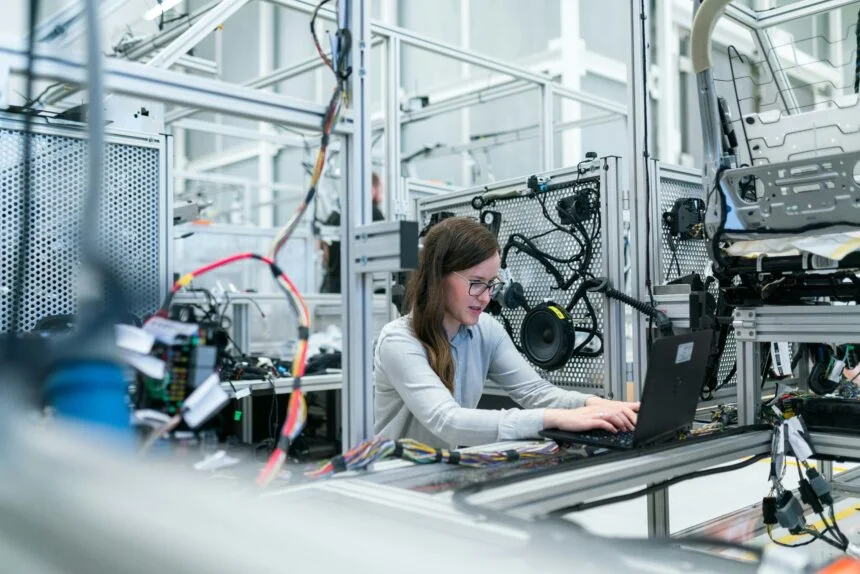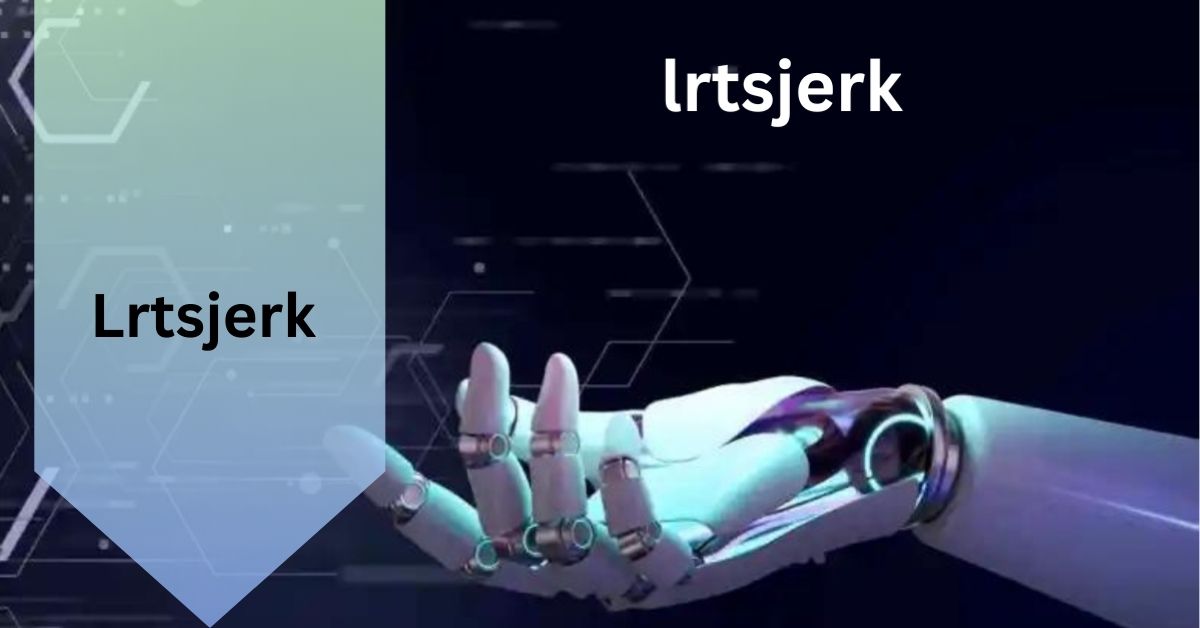Lrtsjerk – A Guide to Cutting – Edge AI
LRTSJERK is an advanced AI framework for real-time processing, scalability, efficiency, and robustness, pivotal in healthcare, finance, autonomous vehicles, and e-commerce.
What is LRTSJERK:
LRTSJERK is an acronym that stands for a theoretical framework or a new technology (hypothetically speaking). The specific details of what LRTSJERK entails might vary, but for the sake of this guide.
Let’s assume it represents a cutting-edge development in the field of machine learning and artificial intelligence. Think of it as a revolutionary algorithm or system that promises to enhance the efficiency and capabilities of existing technologies.
The Core Components of LRTSJERK:

- Learning: At its heart, LRTSJERK involves advanced learning algorithms that adapt and improve over time. These algorithms can process vast amounts of data, identify patterns, and make predictions with high accuracy.
- Real-Time Processing: One of the standout features of LRTSJERK is its ability to process information in real-time. This means quicker decision-making and more responsive systems, which is crucial for applications such as autonomous driving, financial trading, and real-time analytics.
- Scalability: LRTSJERK is designed to be scalable, making it suitable for both small-scale applications and large enterprise solutions. This flexibility ensures that it can be integrated into various systems without significant overhauls.
- Efficiency: By leveraging optimized algorithms and cutting-edge hardware, LRTSJERK aims to maximize efficiency, reducing the computational power and energy required for complex tasks.
- Robustness: Another key aspect of LRTSJERK is its robustness. It is designed to operate reliably under diverse conditions and to handle unexpected inputs gracefully.
How LRTSJERK Works:
To understand how LRTSJERK operates, it’s essential to delve into its underlying mechanics. Imagine a system that combines neural networks, reinforcement learning, and real-time data processing. Here’s a step-by-step breakdown:
- Data Collection: LRTSJERK starts by collecting a vast amount of data from various sources. This data can include anything from user interactions, sensor readings, to historical records.
- Data Processing: Once the data is collected, it undergoes preprocessing. This involves cleaning the data, removing noise, and ensuring it is structured correctly for analysis.
- Model Training: The core of LRTSJERK is its machine learning model. This model is trained using the preprocessed data. Through techniques like supervised learning, unsupervised learning, and reinforcement learning, the model learns to identify patterns and make predictions.
- Real-Time Analysis: After training, the model is deployed to perform real-time analysis. It continuously processes new data, updating its predictions and improving its accuracy.
- Decision Making: Based on the real-time analysis, LRTSJERK can make informed decisions. For instance, in autonomous vehicles, it can decide when to brake or accelerate; in finance, it can trigger trades based on market conditions.
Applications of LRTSJERK:
The potential applications of LRTSJERK are vast and varied. Here are a few examples:
- Healthcare: In the medical field, LRTSJERK can be used to analyze patient data, predict disease outbreaks, and recommend personalized treatment plans. Imagine a system that can detect early signs of chronic illnesses from wearable device data, offering timely interventions.
- Finance: Financial institutions can leverage LRTSJERK for fraud detection, risk management, and algorithmic trading. By analyzing transaction patterns in real-time, LRTSJERK can flag suspicious activities, preventing potential fraud.
- Autonomous Vehicles: LRTSJERK’s real-time processing capabilities make it ideal for improving the safety and efficiency of self-driving cars. It can analyze road conditions, predict the behavior of other vehicles, and make split-second decisions to avoid accidents.
- E-commerce: Online retailers can use LRTSJERK to enhance recommendation systems, optimize inventory management, and personalize the shopping experience. By understanding customer preferences, LRTSJERK can recommend products that are more likely to be purchased, increasing sales and customer satisfaction.
- Smart Cities: In urban planning and management, LRTSJERK can optimize traffic flow, manage energy consumption, and enhance public safety. For instance, it can predict traffic congestion and suggest alternative routes to drivers, reducing travel time and emissions.
- Manufacturing: In the manufacturing industry, LRTSJERK can predict equipment failures, optimize production schedules, and ensure quality control. By analyzing sensor data from machinery, it can foresee maintenance needs, preventing costly downtimes.
The Future of LRTSJERK:

As with any emerging technology, the future of LRTSJERK holds both exciting possibilities and potential challenges. Continued research and development will be essential to unlock its full potential and address any ethical or technical issues that arise.
1. Ethical Considerations:
One of the critical aspects of deploying advanced technologies like LRTSJERK is ensuring ethical use. This includes addressing concerns related to data privacy, algorithmic bias, and the impact on employment. Developers and policymakers must work together to create frameworks that promote transparency, accountability, and fairness.
2. Technological Advancements:
As hardware and software technologies evolve, so too will the capabilities of LRTSJERK. Future developments might include more efficient data processing techniques, better algorithms, and improved integration with other systems. This evolution will likely make LRTSJERK more powerful and versatile.
3. Industry Adoption:
Widespread adoption of LRTSJERK will depend on its demonstrated effectiveness and the return on investment for businesses. Early adopters will likely be industries that can quickly leverage its benefits, such as finance and healthcare. Over time, as the technology matures and becomes more accessible, other sectors will follow suit.
FAQ’s:
1. What is LRTSJERK?
LRTSJERK is a hypothetical framework in machine learning and AI that enhances efficiency, scalability, and real-time processing.
2. How does LRTSJERK improve real-time processing?
LRTSJERK utilizes advanced algorithms to process data instantaneously, enabling quicker decision-making and more responsive systems.
3. What industries can benefit from LRTSJERK?
Industries such as healthcare, finance, autonomous vehicles, e-commerce, smart cities, and manufacturing can significantly benefit from LRTSJERK.
4. What are the core components of LRTSJERK?
The core components include advanced learning algorithms, real-time processing capabilities, scalability, efficiency, and robustness.
5. What ethical considerations are associated with LRTSJERK?
Ethical considerations include data privacy, algorithmic bias, and the impact on employment, necessitating transparency and accountability in its use.
Conclusion:
LRTSJERK represents a significant advancement in the realm of machine learning and AI. Its combination of real-time processing, scalability, efficiency, and robustness makes it a promising tool for various industries. By understanding and leveraging LRTSJERK, businesses and organizations can stay ahead of the curve and drive innovation in their respective fields.

![[noblocc] kicked for being afk](https://relictimes.com/wp-content/uploads/2024/11/image-ezgif.com-webp-to-jpg-converter-2024-11-20T140233.477-1.jpg)


![[noblocc] kicked for being afk](https://relictimes.com/wp-content/uploads/2024/11/image-ezgif.com-webp-to-jpg-converter-2024-11-20T140233.477-1-300x200.jpg)









Post Comment